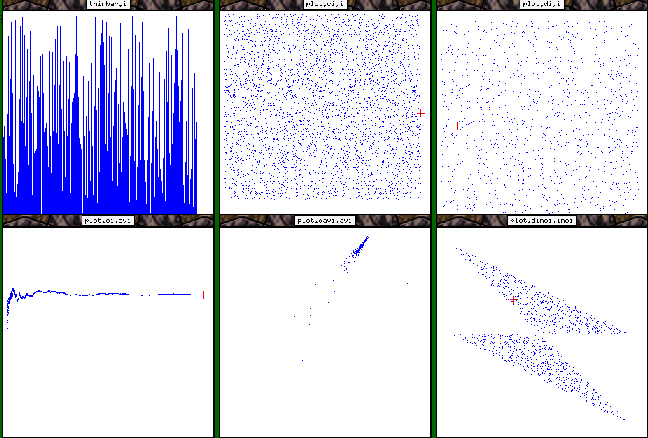
#include <stdio.h>
#include <math.h>
#include "libAGAT.h"
double drand48(void);
/* Modify this function to change your generator*/
double myRand(void)
{
return drand48();
}
int main(int argc, char **argv)
{
int i,j,n;
double v;
nbn=atoi(argv[1]);
for (i = 1; i <= nbn; i++) {
v = drand48();
agatSendDouble("i", v);
}
}
Only the two bold lines have been added for animation.
The first one provide the C compiler with prototypes for the agat library functions.
The second one send double values 'v' on a stream named 'i' which will be used later in the agat code.
-- -- file: aleat.agt -- include "stat.agt","misc.agt"; -- include some predefined macros let ci=account(i); -- count how many values are arrived on stream i let avi=acaverage(i); -- average of this values let inci=increase(i); -- increase between successives values let di=delay(i); -- di is a delayed copy of i let dci=delay(ci); -- ... let davi=delay(avi); let dinci=delay(inci); -- and then we visualize all the streams... -- an histogram view of "i" thinbar(i); -- various plots (in different windows) plot(ci, i); plot(ci, avi); plot(di, i); plot(davi, avi); plot(dinci, inci);

With the drand algorithm.

With J. von Neumann's algorithm.

With Fibonacci's algorithm.
You can easily see the differences between the random generators. The drand algorithm generates good values. There are problems with the others.